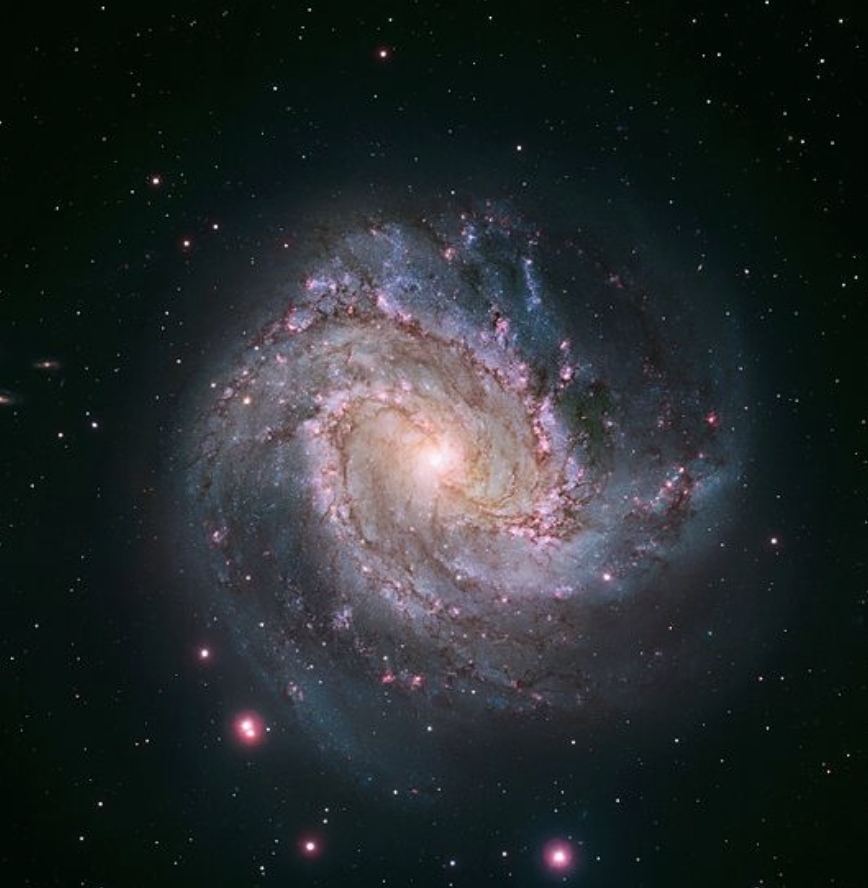12.4 billion light-years away from the Milky Way, a monster galaxy sits, contradicting all rules for galaxies its age. Named AzTEC-1 for the telescope used to discover it, this galaxy formed within the first two billion years after the Big Bang and creates stars at a rate roughly 1,000 times that of our home galaxy.
There are other ‘monster’ galaxies, but AzTEC-1 is unique. Its very structure should be impossible. With 3 star-cluster epicenters and gravitationally unstable spiral arms, AzTEC-1 should have ripped itself apart before it could even begin to form. With new imaging capabilities, astronomers have finally been able to gain more information about this anomalistic galaxy.
A team of researchers from the National Astronomical Observatory of Japan, the University of Massachusetts Amherst, and the Instituto Nacional de Astrofísica in Mexico came together to photograph AzTEC-1 in a resolution 10 times higher than was previously possible, allowing for analyses of the spatial and kinematic makeup of the galaxy.
AzTEC-1 is a spiral galaxy, like our own Milky Way. Spiral galaxies are characterized by a single, central cluster of stardust and other matter, about which gases and other particles rotate, creating ‘arms’ in a spiral-like disc shape. Publishing their findings in a 2018 issue of Nature, the researchers found that the force of gravity generated by the dense gases in the galaxy’s multiple cores is so strong that the rotational velocity of AzTEC-1’s arms should not be sustainable.
Because of the unstable gravitational field, AzTEC-1 should also be unable to generate the internal radiational pressure needed for star formation. The researchers estimate that AzTEC-1’s lifespan should have been roughly 100 million years, but it has lasted 20 times longer than that.
Although researchers cannot definitively say why, it is suspected that the molecular makeup and size of AzTEC-1’s gas clouds are to blame for its unusual structure and lifespan. The clouds in AzTEC-1 are 3 to 5 orders of magnitude larger than other comparable galaxies nearby, although their makeup is currently thought to be essentially the same.
AzTEC-1 is being studied in such depth because it may give a greater insight into how the gravitational structures of other galaxies behave. Starburst galaxies, which form stars at an extremely high rate like AzTEC-1, are commonly found within the same time period as AzTEC-1.
However, since they are 12 billion lightyears away or more, astronomers can only see how they acted 12 billion years ago. Since it is so much larger than other galaxies like it, AzTEC-1 is a prime subject for imaging tests like the one performed in this study.
Categories:
Tigra Scientifica: AzTEC-1: A Monstrous Galaxy
CJ Gott, Contributor
December 3, 2018
Courtesy of Wikimedia
With 3 star-cluster epicenters and gravitationally unstable spiral arms, AzTEC-1 should have ripped itself apart before it could even begin to form.
0
Donate to The Tiger
Your donation will support the student journalists of Clemson University. Your contribution will allow us to purchase equipment and cover our annual website hosting costs.
More to Discover









